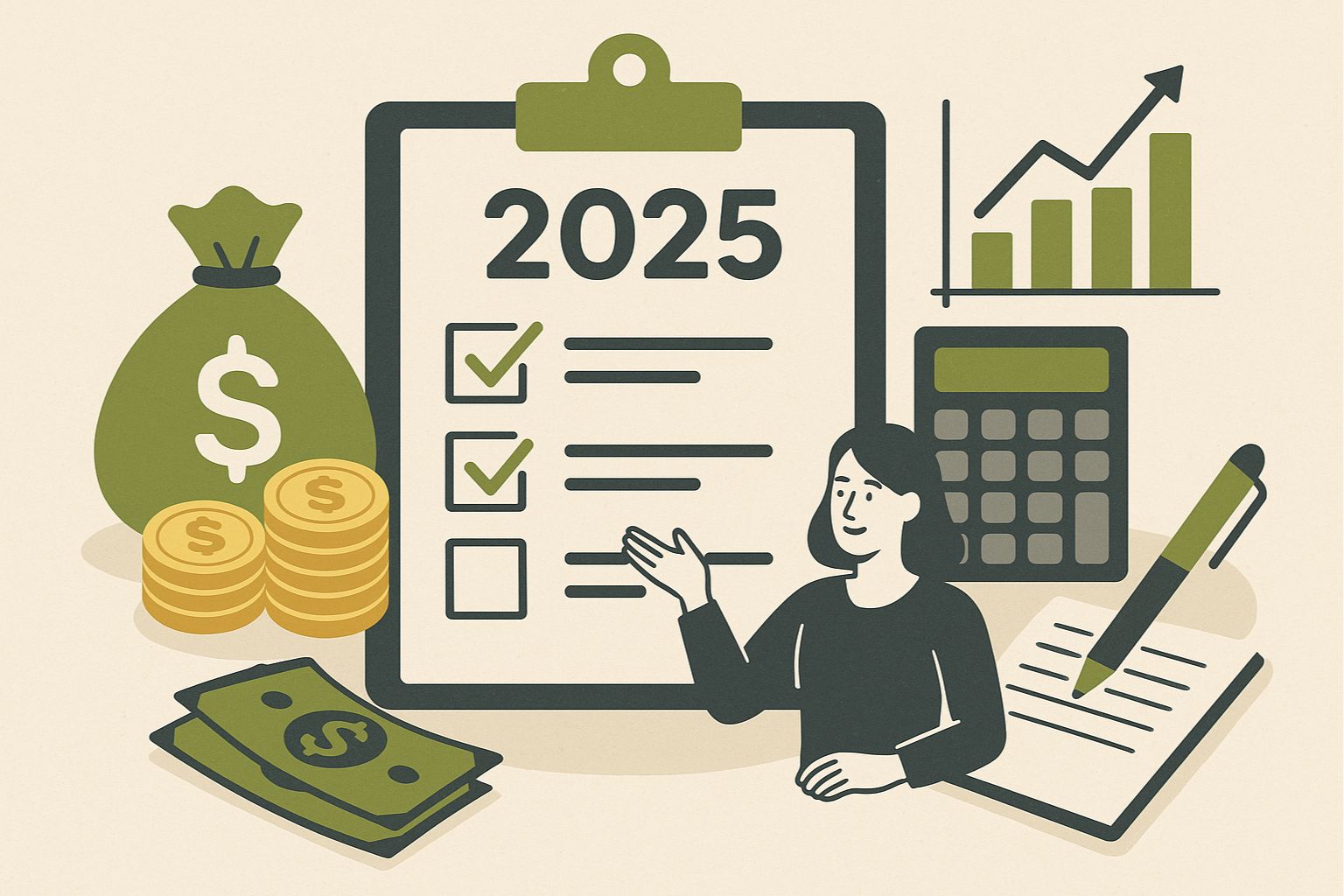How to Create a Financial Plan in 2025: A Step-by-Step Guide
Let’s face it—when it comes to money, we all know it’s something we should think about more often. But between bills, work, and life, it can be easy to let it slide. Still, having a financial plan is one of the most important things you can do for your future. Whether you’re thinking about buying a house, retiring someday, or just not feeling overwhelmed by your bank account, a financial plan can help you get where you want to go.
Table of Contents
ToggleWhat Is a Financial Plan?
In simple terms, A financial plan is your personal roadmap to achieving short-term as well as long-term money goals, it’s just a strategy for managing your money. It’s about figuring out your income, what you owe, what you want to save, and how you can get there. It’s like having a map when you’re driving somewhere new—you wouldn’t just jump in the car without a destination, right?
For most of us in the U.S., dealing with things like student loans, rising living costs, and just trying to save for the future, a solid plan is essential. It doesn’t have to be complicated, but without a plan, you might feel like you’re just drifting, hoping things work out.
- Budgeting
- Debt management
- Saving and investing strategies
- Retirement and insurance planning
Understand Your Current Financial Situation

Before you can get to your goals, you need to understand where you’re starting from. Take a look at the basics:
How much do you make? This includes your salary, side gigs, or any other income sources.
How much do you spend? Don’t just think about your rent and utilities—add things like grocery bills, streaming services, and that coffee you grab every morning.
What do you own? It includes financial elements such as saving, investing, and managing property.
What do you owe? Think about credit card debt, loans, mortgages, anything that’s hanging over you.
Once you get an honest look at all this, you can start thinking about your next steps. The clearer your picture, the better your plan will be.
Set Your Financial Goals
Now comes the fun part—setting your goals. But don’t just make vague wishes like, “I want to be rich.” The key to a good financial plan is specific goals. You’ve got to know what you’re aiming for.
Short-term goals could be things like paying off a credit card or saving for a vacation.
Medium-term goals might involve saving for a down payment on a house or setting up a college fund.
Long-term goals will probably be things like building your retirement savings or paying off your mortgage.
Remember: Make them realistic. The clearer you are, the more likely you are to stay motivated and actually hit those goals.
Create a Monthly Budget That Actually Works
Your budget shouldn’t feel like a punishment—it’s a tool for freedom. Try the 50/30/20 rule:
50% Needs (rent, bills, groceries)
30% Wants (eating out, Netflix, hobbies)
20% Savings and debt repayment
Tip: Automate savings so you’re not tempted or allowed to skip it.
Build an Emergency Fund (Seriously)
Here’s the thing: Life throws curveballs. You might lose your job, get an unexpected medical bill, or have your car break down. Having an emergency fund means that when those things happen, you’re not totally screwed. Experts recommend aiming for at least 3-6 months’ worth of living expenses in savings.
It’s tempting to skip this part, but trust me—once it’s there, you’ll feel so much more secure. If you can’t put aside a huge amount all at once, start small. Even $500 or $1,000 can be a solid first step.
Pay Off Your Debt (You Can Do This)

Debt can feel like a heavy weight holding you back, but you’ve got this. The good news? There are methods you can use to knock it out.
Debt Snowball: Pay off your smallest debts first. It feels amazing to knock them out, and you’ll gain momentum.
Debt Avalanche: If you’re more focused on saving money on interest, start with the debt that has the highest interest rate.
Tackling your debt is a huge part of any financial plan—once it’s gone, you’ll free up cash to do more with.
Invest for the Future (Don’t Wait)
Here’s the thing about investing: The sooner you start, the more you’ll benefit from compound interest. You don’t have to be a stock market expert to start building wealth. In fact, here are a few ways most people invest in the U.S.:
Stocks: These are high-risk but have the potential for high returns.
Bonds: They’re a safer bet but usually have lower returns.
Real Estate: Owning property is a tried-and-tested way to grow wealth.
Retirement Accounts: Contribute to a 401(k), IRA, or other tax-advantaged accounts.
You don’t need to go all in on one thing. A mix of these options can help you build wealth over time and secure your future.
Protect Your Plan with Insurance
What’s the point of building wealth if one accident can wipe it out? Protect yourself with:
Health insurance (a must)
Term life insurance, if you have dependents
Vehicle or home insurance, if applicable
You’re not being pessimistic—you’re being smart.
Regularly Check in on Your Plan
Life is constantly changing, so it’s essential to revisit your financial plan now and then. Maybe you get a raise, or maybe you add a new member to your family. Whatever happens, make sure your plan is flexible enough to accommodate those changes. Set a reminder to check in on your goals and tweak your approach every few months or whenever something big happens.
Key Takeaways: Start Today for a Better Tomorrow
Creating a financial plan isn’t about being perfect. It’s about getting started and adjusting as you go. Whether you’re saving for a house, paying off debt, or just trying to get your finances in order, taking small steps every day will get you where you want to be.
So, what are you waiting for? Take the first step today. Your future self will thank you.
FAQs About Financial Plan 2025
What tools can I use for financial planning in 2025?
Popular tools for financial planning in 2025 include apps like Mint, YNAB (You Need a Budget), Empower (formerly Personal Capital), and online financial calculators for retirement, savings, and loan planning.
Can I make a financial plan without a financial advisor?
Yes, you can create a basic financial plan using online tools and templates. However, a financial advisor can offer tailored advice for complex situations like estate planning or tax optimization.
What are the top financial goals to consider in 2025?
Top financial goals for 2025 may include building an emergency fund, paying off high-interest debt, saving for retirement, investing in the stock market, and planning for large expenses like a home or education.
How often should I review my 2025 financial plan?
Review your financial plan quarterly to make adjustments based on income changes, life events, or market shifts.
Is it too late to start financial planning for 2025?
Not at all! It’s never too late to start. The sooner you begin organizing your finances, the better your chances of achieving stability and long-term goals.
How do I update my financial plan mid-year?
Use your quarterly financial review to revise your goals, adjust your budget, and rebalance your investments.
Where can I get a free financial plan template?
Many financial websites and apps offer free downloadable templates (e.g., NerdWallet, Fidelity, and Excel budget planners).
Who should I contact for expert help?
Reach out to a certified financial planner (CFP), tax advisor, or financial coach for personalized advice.
Be part of the FinanceCult community


